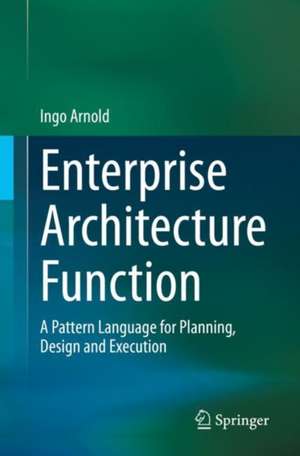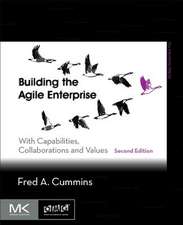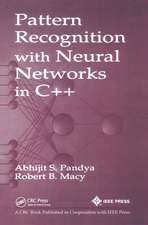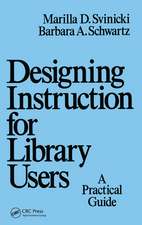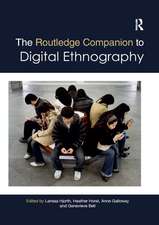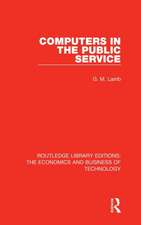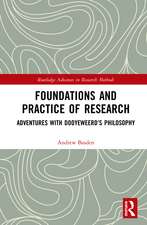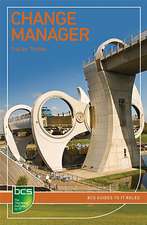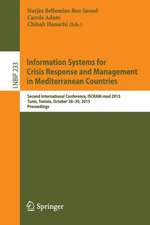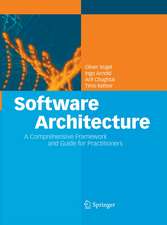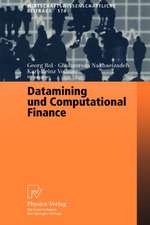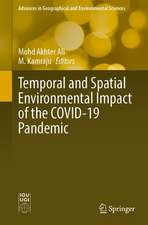Enterprise Architecture Function: A Pattern Language for Planning, Design and Execution
Autor Ingo Arnolden Limba Engleză Paperback – 4 ian 2022
The book is structured in six chapters. Chapter 1 “Introduction” explains the starting position and objectives of the book and introduces key concepts that will be explained further in subsequent chapters. Chapter 2 “Architecture Function Pattern Language” introduces the concepts of pattern, pattern catalogue, pattern topology, and ontology and explains how these concepts are combined to form a pattern language for planning, designing, and operating an architecture function. Next, Chapter 3 “Architecture Function – Context“ introduces concepts that are crucial for understanding the challenges that an architecture function faces and presents a generic schema for the business organizations and value chain. Chapter 4 “Architecture Function – Challenge” looks at an architecture function from a black box perspective and outlines the expectations and requirements that companies place on architecture organizations. It discusses the building blocks of an architecture function, the services it provides along the enterprise value chain, and the quality attributes that enterprises expect from their functions. Chapter 5 “Architecture Function – Constitution” then shifts from a black-box perspective to a white-box perspective and outlines the generic design of an architecture function in order to realize functional and quality-related requirements. Chapter 6 “Pattern Catalogue“ eventually introduces the pattern catalogue with a total of 48 architecture function patterns. These patterns suggest designs for collaboration between the architecture function and enterprise organizations, for the elaboration and development of enterprise services along the enterprise value chain, or for aligning architecture governance with enterprise governance.
The book is intended for a broad readership, including enterprise, domain, and solution architects, lecturers and students, and anyone else interested in understanding the value proposition, responsibilities, outcomes, methods, and practices of architecture functions. It introduces the basic concepts and theories needed to understand the pattern language presented and the patterns it summarizes.
Preț: 603.36 lei
Preț vechi: 754.20 lei
-20% Nou
Puncte Express: 905
Preț estimativ în valută:
115.47€ • 125.38$ • 96.99£
115.47€ • 125.38$ • 96.99£
Carte tipărită la comandă
Livrare economică 22 aprilie-06 mai
Preluare comenzi: 021 569.72.76
Specificații
ISBN-13: 9783030845889
ISBN-10: 3030845885
Pagini: 521
Ilustrații: XXII, 521 p. 374 illus.
Dimensiuni: 155 x 235 x 36 mm
Greutate: 0.83 kg
Ediția:1st ed. 2022
Editura: Springer International Publishing
Colecția Springer
Locul publicării:Cham, Switzerland
ISBN-10: 3030845885
Pagini: 521
Ilustrații: XXII, 521 p. 374 illus.
Dimensiuni: 155 x 235 x 36 mm
Greutate: 0.83 kg
Ediția:1st ed. 2022
Editura: Springer International Publishing
Colecția Springer
Locul publicării:Cham, Switzerland
Cuprins
1. Introduction.- 2. Architecture Function Pattern Language.- 3. Architecture Function: Context.- 4. Architecture Function: Challenge.- 5. Architecture Function: Constitution.- 6. Pattern Catalog.
Notă biografică
Ingo Arnold shaped the Enterprise Architecture Function of a global fortune 50s, holding a variety of Architecture Management positions over the last 25 years. In addition to his roles in the industry, Ingo is an Assistant Professor at Universities in Switzerland and Germany sharing his insights and experience with several generations of computer science students. He is also a well-known speaker at professional IT conferences, where he holds presentations on topics such as architecture management and governance, enterprise architecture, and solution architecture for international audiences.
Textul de pe ultima copertă
This book provides a method to plan, develop, validate, or evolve the design of an enterprise architecture function so that it fully meets the organization’s needs. The reader will benefit from this book in two ways. First, it provides a structured overview and orientation to the subject of architecture from an architecture function perspective. Second, it guides through the process of planning, building, and operating your own architecture organization based on a generic architecture function blueprint presented in the form of a pattern language offering a structured means for navigating, contextualizing, combining, and composing the architecture function patterns.
The book is structured in six chapters. Chapter 1 “Introduction” explains the starting position and objectives of the book and introduces key concepts that will be explained further in subsequent chapters. Chapter 2 “Architecture Function Pattern Language” introduces the concepts of pattern, pattern catalogue, pattern topology, and ontology and explains how these concepts are combined to form a pattern language for planning, designing, and operating an architecture function. Next, Chapter 3 “Architecture Function – Context“ introduces concepts that are crucial for understanding the challenges that an architecture function faces and presents a generic schema for the business organizations and value chain. Chapter 4 “Architecture Function – Challenge” looks at an architecture function from a black box perspective and outlines the expectations and requirements that companies place on architecture organizations. It discusses the building blocks of an architecture function, the services it provides along the enterprise value chain, and the quality attributes that enterprises expect from their functions. Chapter 5 “Architecture Function – Constitution” then shifts from a black-box perspective to a white-box perspective and outlines the generic design of an architecture function in order to realize functional and quality-related requirements. Chapter 6 “Pattern Catalogue“ eventually introduces the pattern catalogue with a total of 48 architecture function patterns. These patterns suggest designs for collaboration between the architecture function and enterprise organizations, for the elaboration and development of enterprise services along the enterprise value chain, or for aligning architecture governance with enterprise governance.
The book is intended for a broad readership, including enterprise, domain, and solution architects, lecturers and students, and anyone else interested in understanding the value proposition, responsibilities, outcomes, methods, and practices of architecture functions. It introduces the basic concepts and theories needed to understand the pattern language presented and the patterns it summarizes.
The book is structured in six chapters. Chapter 1 “Introduction” explains the starting position and objectives of the book and introduces key concepts that will be explained further in subsequent chapters. Chapter 2 “Architecture Function Pattern Language” introduces the concepts of pattern, pattern catalogue, pattern topology, and ontology and explains how these concepts are combined to form a pattern language for planning, designing, and operating an architecture function. Next, Chapter 3 “Architecture Function – Context“ introduces concepts that are crucial for understanding the challenges that an architecture function faces and presents a generic schema for the business organizations and value chain. Chapter 4 “Architecture Function – Challenge” looks at an architecture function from a black box perspective and outlines the expectations and requirements that companies place on architecture organizations. It discusses the building blocks of an architecture function, the services it provides along the enterprise value chain, and the quality attributes that enterprises expect from their functions. Chapter 5 “Architecture Function – Constitution” then shifts from a black-box perspective to a white-box perspective and outlines the generic design of an architecture function in order to realize functional and quality-related requirements. Chapter 6 “Pattern Catalogue“ eventually introduces the pattern catalogue with a total of 48 architecture function patterns. These patterns suggest designs for collaboration between the architecture function and enterprise organizations, for the elaboration and development of enterprise services along the enterprise value chain, or for aligning architecture governance with enterprise governance.
The book is intended for a broad readership, including enterprise, domain, and solution architects, lecturers and students, and anyone else interested in understanding the value proposition, responsibilities, outcomes, methods, and practices of architecture functions. It introduces the basic concepts and theories needed to understand the pattern language presented and the patterns it summarizes.
Caracteristici
Provides a method to plan, develop, validate, or evolve the design of an enterprise architecture (EA) function Includes a catalogue of 48 patterns for collaboration between the architecture function and enterprise organizations Introduces enterprise, domain, and solution architects, lecturers and students to basic concepts of EA
